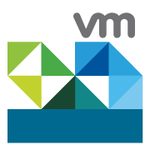Description

IBM Turbonomic

Sensu

VMware vSphere
Comprehensive Overview: IBM Turbonomic vs Sensu vs VMware vSphere
Certainly! Let’s dive into each of these products—IBM Turbonomic, Sensu, and VMware vSphere—to provide a comprehensive overview based on their primary functions, target markets, market share, user base, and key differentiating factors.
IBM Turbonomic
a) Primary Functions and Target Markets:
- Primary Functions: IBM Turbonomic is primarily an application resource management (ARM) platform. It uses AI to automate IT resources to ensure application performance by managing resources such as compute, storage, and network. It provides visibility into the performance of IT environments and offers real-time actions for optimizing resources.
- Target Markets: The platform targets large enterprises and organizations that rely heavily on complex IT infrastructures. Industries such as finance, healthcare, retail, and telecommunications are typical sectors that use Turbonomic to ensure application availability and optimize cloud and on-premise workloads.
b) Market Share and User Base:
- Market Share and User Base: IBM Turbonomic is a niche product within the application resource management space, often bolstered by IBM's larger market presence in enterprise software and hardware solutions. While specific market share data can fluctuate, Turbonomic benefits from being part of IBM’s broader cloud and AI strategy, making it appealing to IBM’s extensive existing customer base.
c) Key Differentiating Factors:
- AI-Driven Automation: One key differentiator is its use of AI to make autonomous decisions about resource allocation.
- Cross-Environment Support: It supports both cloud and on-premises environments, providing a unified view of resource utilization.
Sensu
a) Primary Functions and Target Markets:
- Primary Functions: Sensu is an open-source monitoring solution designed to provide full-stack observability across infrastructure, applications, and business metrics. It manages and tracks the health and performance of servers, services, and systems.
- Target Markets: Sensu is used by both small startups and large enterprises requiring a robust monitoring and observability platform. Its open-source nature makes it accessible to organizations that prioritize customization and integration versatility.
b) Market Share and User Base:
- Market Share and User Base: Sensu has a notable presence in the open-source monitoring space. It has a strong community following and is often adopted by organizations seeking a flexible, community-driven monitoring solution. Compared to proprietary and larger commercial solutions, Sensu's market share might be smaller, but it has growing adoption due to its adaptability.
c) Key Differentiating Factors:
- Open-Source Foundation: One of Sensu’s main differentiators is being open-source, which offers a high degree of adaptability.
- Plugin Ecosystem: Sensu’s extensive library of plugins allows for a highly customizable monitoring setup.
- Ease of Use in Real-Time Monitoring: Its approach to real-time observability and monitoring is straightforward and dynamic.
VMware vSphere
a) Primary Functions and Target Markets:
- Primary Functions: VMware vSphere is a comprehensive server virtualization platform. It allows organizations to run, manage, connect, and secure their applications in a common operating environment across clouds.
- Target Markets: vSphere is targeted mainly at medium to large enterprises that require virtualization of their IT infrastructure. It is used by organizations across numerous industries seeking to consolidate and optimize their IT resources, transitioning to virtualized data centers and increasingly, cloud environments.
b) Market Share and User Base:
- Market Share and User Base: VMware vSphere holds a significant share in the virtualization market. It is widely adopted in enterprises globally, standing as one of the industry leaders in server virtualization technologies.
c) Key Differentiating Factors:
- Enterprise-Grade Virtualization: vSphere is known for its robust, enterprise-grade virtualization capabilities.
- Integration with Other VMware Products: vSphere integrates seamlessly with other VMware tools, providing a holistic solution for virtualized and cloud environments.
- High Availability and Resource Management: Advanced features for resource management, including support for large-scale virtualization, are among its standout aspects.
Comparative Overview
- Market Focus: IBM Turbonomic focuses on application optimization leveraging AI. Sensu focuses on open-source monitoring and observability, while VMware vSphere is strong in server virtualization.
- Innovation: IBM Turbonomic’s AI-driven resource management contrasts with Sensu’s real-time monitoring and VMware’s stronghold in virtualization technology.
- User Base: Turbonomic harnesses the broad reach of IBM, Sensu appeals to the open-source community, and VMware is dominant in virtualization for large enterprises.
Each of these products serves specific aspects of IT infrastructure management and optimization, with unique strengths catering to different organizational needs and strategies.
Contact Info

Year founded :
2010
+1 844-438-8872
Not Available
United States
http://www.linkedin.com/company/turbonomic

Year founded :
2010
Not Available
Not Available
Netherlands
Not Available

Year founded :
Not Available
Not Available
Not Available
United States
http://www.linkedin.com/company/vmware-vsphere
Feature Similarity Breakdown: IBM Turbonomic, Sensu, VMware vSphere
When evaluating IBM Turbonomic, Sensu, and VMware vSphere, it’s important to recognize that they are designed to accomplish somewhat different objectives within IT environments, yet they share some overlapping features. Here’s a breakdown based on their core functionalities, user interfaces, and unique features:
a) Core Features in Common
-
Resource Management:
- IBM Turbonomic: Focuses on ensuring that all applications have the resources they need at the right time, utilizing AI for decision automation.
- Sensu: Primarily a monitoring tool, but it includes capabilities for resource monitoring that help track the availability and performance of infrastructure and applications.
- VMware vSphere: Provides extensive resource management through virtualization technology, enabling efficient workload management across virtual machines.
-
Performance Monitoring:
- All three platforms offer features that help monitor the performance of IT assets. VMware vSphere offers detailed statistics about virtual machine performance, while IBM Turbonomic provides insight into how resources are being utilized across applications. Sensu excels in monitoring metrics and logs across various parts of the infrastructure.
-
Scalability:
- These solutions support scalability to accommodate growing IT environments. VMware vSphere allows for scaling with virtualization capabilities, IBM Turbonomic scales by making continuous resource optimization recommendations, and Sensu uses a modular architecture to add functionality as needed.
-
Alerting and Notification Systems:
- Alerts and notifications are essential features common to all, though implemented differently. VMware vSphere and Sensu offer complex alerting systems while IBM Turbonomic offers alerts based on AI-driven insights.
b) User Interface Comparison
-
IBM Turbonomic: Known for its intuitive, AI-driven user interface that presents resource recommendations clearly. It offers rich visualizations and dashboards that help users understand performance and resource distribution across an IT environment.
-
Sensu: Provides a more straightforward and scriptable interface ideal for DevOps environments. It offers a range of plugins and integrations tailored for ease of use in monitoring configurations.
-
VMware vSphere: Features a robust and sophisticated UI, designed for detailed management of virtual environments. vSphere's client interfaces are typically more complex but provide comprehensive options for managing virtual resources, setting configurations, and deploying virtual machines.
c) Unique Features
-
IBM Turbonomic:
- AI-Powered Decision Automation: Uses machine learning to recommend actions that optimize resource allocation continuously.
- End-to-End Application Resource Management: Specifically designed to ensure application performance by dynamically allocating resources.
-
Sensu:
- Integration Flexibility: Highly extensible with various plugins and integrations, making it versatile for adapting to different environments.
- Event-Based Monitoring: Uniquely focused on monitoring events and enabling quick troubleshooting of potential issues.
-
VMware vSphere:
- Virtualization Capabilities: Provides extensive virtualization functionalities central to managing virtual machines and the infrastructure they operate on.
- High Availability and Fault Tolerance: Offers robust features to ensure uptime and reliability for virtual environments.
While each tool provides overlapping capabilities in terms of monitoring and resource management, their unique strengths and feature sets cater to different aspects of IT operations, making them suitable for varying organizational needs.
Features

Not Available

Not Available

Not Available
Best Fit Use Cases: IBM Turbonomic, Sensu, VMware vSphere
Certainly! Each of these platforms—IBM Turbonomic, Sensu, and VMware vSphere—serves distinct purposes and is suited to specific use cases. Here's how they differentiate in terms of business types, projects, scenarios, and industry adaptations:
a) IBM Turbonomic
Use Cases:
- Businesses: Medium to large enterprises with complex IT environments focusing on optimizing cloud and on-premises applications.
- Projects: Optimization projects aimed at balancing performance and cost efficiency across hybrid cloud environments.
IBM Turbonomic is Best For:
- Optimizing Resource Utilization: Ideal for businesses wanting to automate decision-making for resource allocation to ensure application performance while minimizing costs. It's especially beneficial for industries with dynamic and high-demand environments like finance, retail, and telecommunications.
- Hybrid and Multi-cloud Strategies: Companies transitioning or operating within multi-cloud environments can leverage Turbonomic for better management and orchestration to prevent resource wastage and cost overruns.
- Performance Assurance: Organizations in industries where application uptime and performance are critical (e.g., healthcare, ecommerce) will find value in IBM Turbonomic's real-time insights and automated actions.
b) Sensu
Use Cases:
- Businesses: Small to medium-sized businesses (SMBs) and startups with limited infrastructure but requiring effective monitoring solutions.
- Projects: Projects that focus on DevOps practices and need robust monitoring across heterogeneous environments.
Sensu is Preferred For:
- Monitoring and Alerting: When there's a need for comprehensive monitoring of infrastructure, servers, and applications. It's useful in scenarios where rapid alerting and incident response are essential.
- Developer-Driven Environments: Companies adopting modern DevOps methodologies, focusing on infrastructure as code, and requiring integration with various tools like Slack, PagerDuty, or other alert management systems.
- Scalability: While it handles large environments, Sensu is particularly effective for organizations that need a cost-effective, flexible, and customizable monitoring solution that scales with their growth needs.
c) VMware vSphere
Use Cases:
- Businesses: Large enterprises and data centers looking for robust virtualization solutions.
- Projects: Enterprise-level projects requiring high levels of virtualization and the ability to manage large numbers of virtual machines.
vSphere Consideration:
- Virtualization Needs: Best suited for companies looking to maximize server performance and utilization through advanced virtualization technology. Ideal for IT departments aiming to consolidate workloads, reduce hardware costs, and enhance system resilience.
- Mature IT Infrastructures: Businesses across sectors like finance, government, and education that have mature IT frameworks and need efficient data center management.
- Integration with Other VMware Products: Enterprises already utilizing the VMware ecosystem will benefit from the seamless integration and operational efficiencies that vSphere provides.
d) Industry Verticals and Company Sizes
-
IBM Turbonomic: Primarily targets larger companies or enterprises within industries with intricate and high-demand IT environments. It is preferred in sectors with stringent performance and compliance requirements like finance, healthcare, and retail.
-
Sensu: Adapts well to SMBs and tech-driven companies needing flexibility in monitoring tools without the complexities of enterprise-grade solutions. It caters well to tech and internet companies, startups, and businesses using cloud-native or containerized applications.
-
VMware vSphere: Serves a wide range of industry verticals, especially those with significant investment in data centers and virtualization technologies. It is suitable for large enterprises or any organization requiring a robust and reliable virtualization platform.
Each platform offers unique strengths tailored to different technical requirements and organizational goals, allowing businesses to select based on their specific needs, scale, and industry.
Pricing

Pricing Not Available

Pricing Not Available

Pricing Not Available
Metrics History
Metrics History
Comparing teamSize across companies
Conclusion & Final Verdict: IBM Turbonomic vs Sensu vs VMware vSphere
To determine which product offers the best overall value among IBM Turbonomic, Sensu, and VMware vSphere, it's important to consider the specific needs and priorities of an organization. Each product has its own strengths and weaknesses that cater to different aspects of cloud management, monitoring, and virtualization.
Conclusion:
a) Considering all factors, which product offers the best overall value?
The best overall value depends largely on the context of use. If the focus is on comprehensive application resource management with automation, IBM Turbonomic is a strong contender. For robust monitoring and observability, Sensu shines, especially in dynamic, containerized environments. However, for enterprises prioritizing a fully integrated virtualization platform with extensive feature sets for managing virtual machines and ensuring high efficiency, VMware vSphere is unparalleled.
For most enterprises, VMware vSphere typically offers the best overall value due to its comprehensive virtualization capabilities and wide acceptance in enterprise environments. However, for those specifically focused on cloud resource optimization and dynamic monitoring, the other options might be more suitable.
b) Pros and Cons of Each Product:
IBM Turbonomic:
- Pros:
- Offers automated resource management across applications, containers, and cloud environments.
- Facilitates cost savings by optimizing resource utilization.
- Provides insights that help in enhancing application performance.
- Cons:
- May require significant setup and configuration time.
- Can be complex for smaller organizations or those with limited technical expertise.
- Licensing costs can be relatively high.
Sensu:
- Pros:
- Highly modular and customizable, suitable for cloud-native environments.
- Strong support for dynamic monitoring in containerized setups.
- Open-source version available, which can be cost-effective.
- Cons:
- Might require more effort in initial deployment and configuration.
- Advanced features might need additional third-party integrations.
- Scalability can be challenging without extensive infrastructure.
VMware vSphere:
- Pros:
- Industry-leading virtualization platform with extensive features.
- Provides high efficiency, reliability, and robust support.
- Seamless integration with other VMware products and solutions.
- Cons:
- Higher licensing and operational costs.
- Resource-intensive, potentially requiring significant infrastructure.
- Complexity can be overwhelming without sufficient expertise.
c) Specific Recommendations:
-
For Organizations Seeking Optimal Virtualization Solutions:
- VMware vSphere is recommended for organizations with a focus on virtualization management, especially those that are already using other VMware products. Its reliability and robustness make it a go-to choice for maintaining extensive virtualized environments.
-
For Businesses Prioritizing Cost-Optimization and Resource Management:
- IBM Turbonomic should be considered by organizations that prioritize application performance and cost optimization through automated resource management across hybrid and multi-cloud environments.
-
For Companies Needing Flexible, Open-Source Monitoring:
- Sensu is ideal for businesses looking for a customizable, dynamic monitoring solution, particularly those operating within cloud-native and containerized environments. The open-source aspect can be appealing for those with tight budgets or specific custom requirements.
Ultimately, users should align their choice with their specific use cases, infrastructure demands, and strategic objectives. A detailed evaluation of immediate and future needs will guide organizations in making the best economic and operational choice.